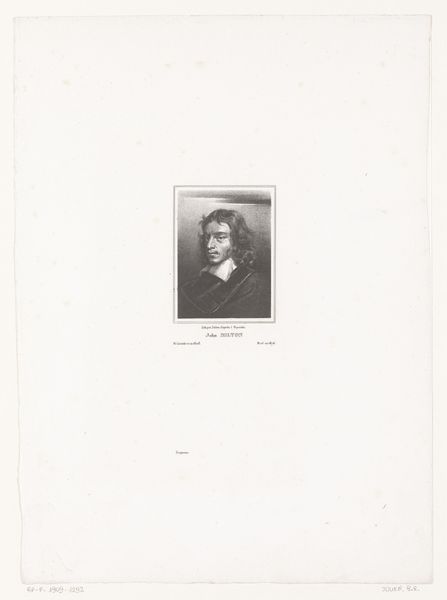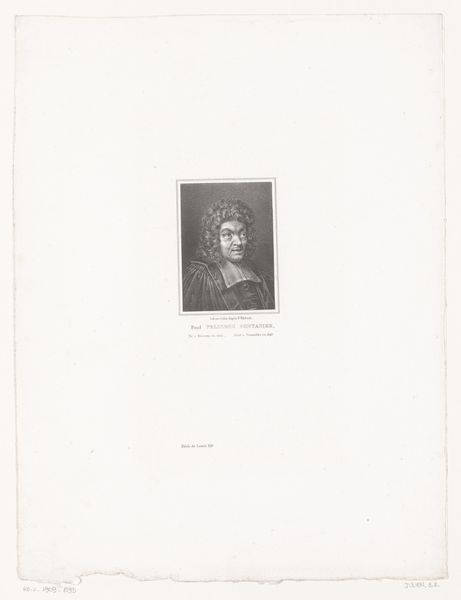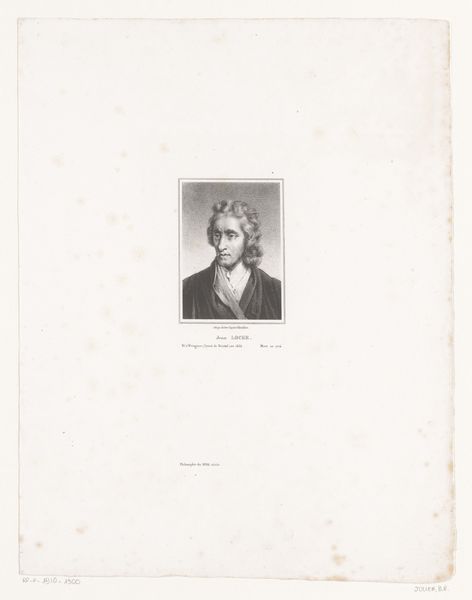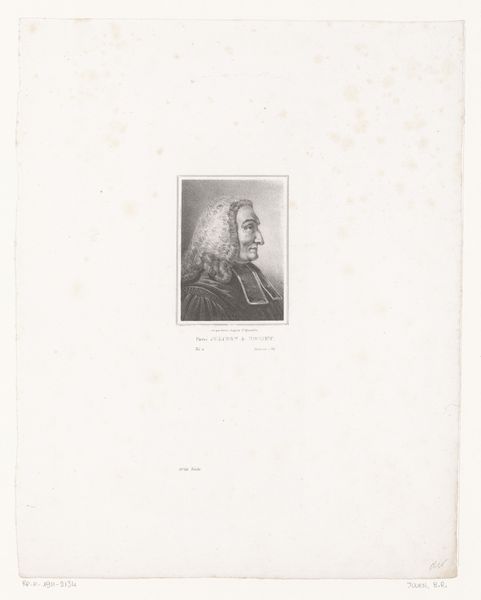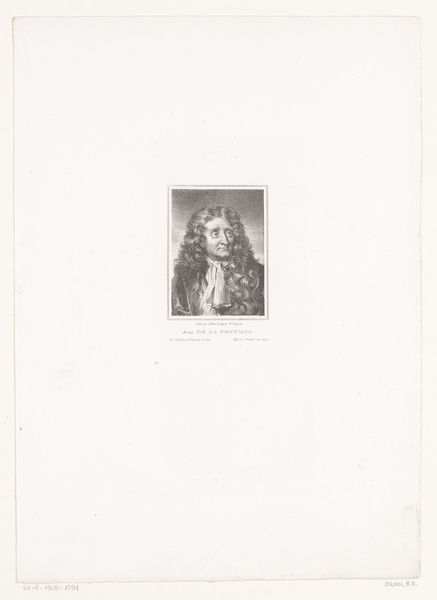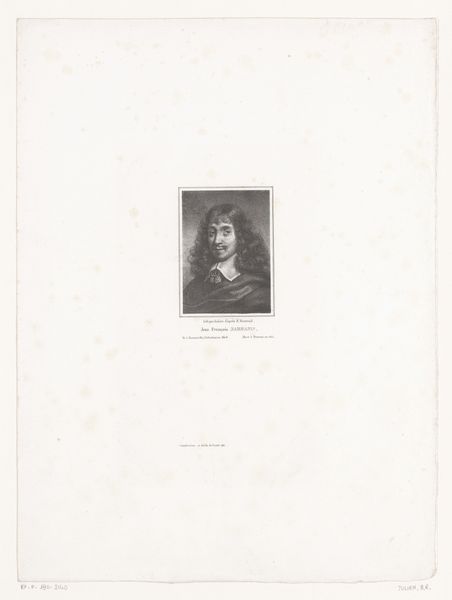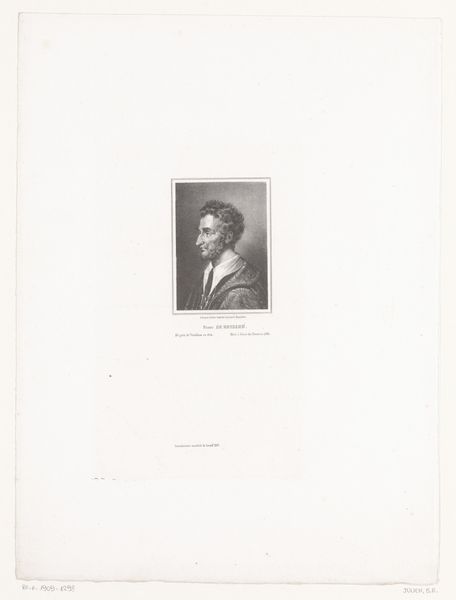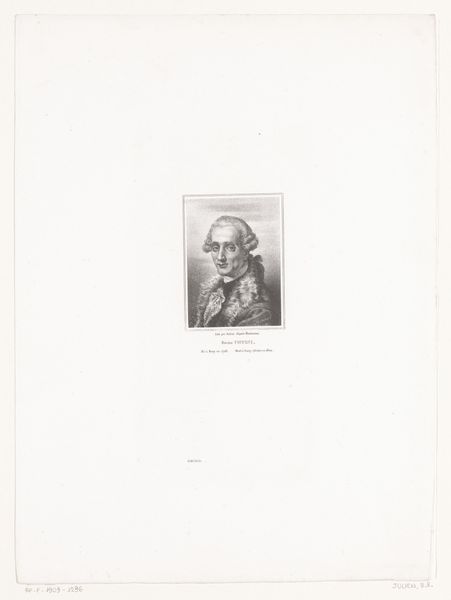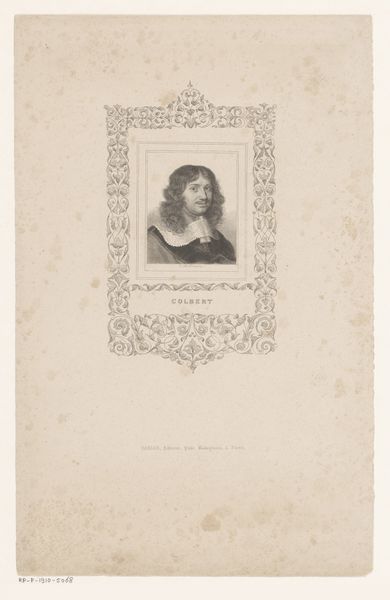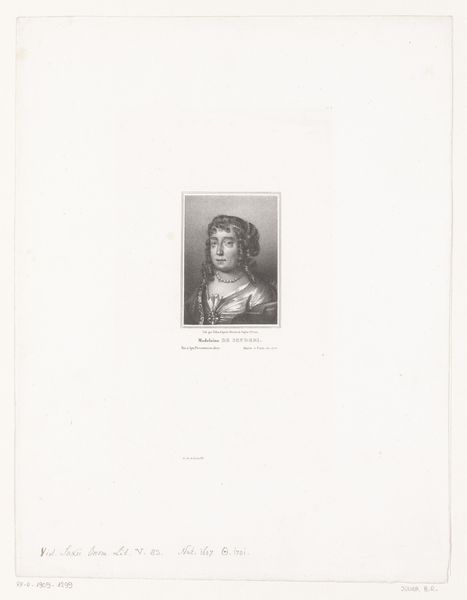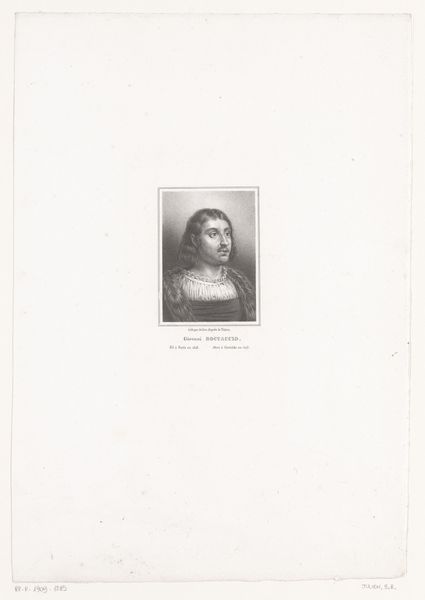
print, engraving
#
portrait
#
neoclacissism
# print
#
engraving
#
realism
Dimensions: height 333 mm, width 248 mm
Copyright: Rijks Museum: Open Domain
Curator: Welcome. We are standing before Bernard Romain Julien's 1830 engraving, "Portret van Antoine Le Maistre," housed here at the Rijksmuseum. Editor: It's quite austere, isn't it? The etching possesses this striking melancholy; his gaze, turned slightly away, speaks volumes of inner reflection. The tonality leans towards a subdued monochrome that gives it a pensive ambiance. Curator: Julien's print work really leans into the Neoclassical fondness for clarity and restraint. Notice how he’s utilized engraving to define shapes? The meticulousness gives incredible detail to Antoine Le Maistre's physiognomy. Look how the artist's skill renders the fabric’s texture. Editor: Absolutely, but I am more drawn to Le Maistre's story implied by the composition. The subject, who dedicated his life to Jansenism—a controversial movement within Catholicism— is visibly communicated by his downcast eyes. This, coupled with his somber garb, signals his profound religious commitment. The style seems almost hagiographic. Curator: You make an interesting observation, indeed. Although rendered in monochrome, observe the sophisticated light and shadow relationships. Light rakes across Le Maistre’s brow and cheek, yet fades softly into the darkened robe, giving three-dimensionality within a two-dimensional plane. Editor: Light in art can carry meaning of spirituality and truth. Le Maistre’s features cast into partial shadow seem symbolic; a man wrestling with faith perhaps. The overall muted palette reinforces seriousness, hinting towards his reclusive life centered on intense scholarship and devotion. Curator: Certainly, the lack of color reinforces formality typical of Neoclassical portraiture, further emphasizing linear precision as the focal device, while lending itself well to reproduction, in the print medium. The structural lines create planes. Editor: I cannot help but perceive the portrait as an icon of devotion and moral conviction, presented through Antoine Le Maistre's reserved features and his simple attire. These things together solidify his place as a stoic spiritual exemplar. Curator: Interesting perspectives! Focusing purely on its formal execution and materials, Julien's skill and the printing medium is quite compelling. Editor: True; but to perceive the image's symbols helps to see past mere shape to a narrative steeped in religious zeal and personal sacrifice.
Comments
No comments
Be the first to comment and join the conversation on the ultimate creative platform.
